Dacia Spring vs Ford Puma – Differences & prices compared
Compare performance, boot capacity, efficiency and price at a glance.
Find out which car is the better choice for you – Dacia Spring or Ford Puma?
Costs and Efficiency:
Price and efficiency are key factors when choosing a car – and this is often where the real differences emerge.
Dacia Spring has a decisively advantage in terms of price – it starts at 14500 £, while the Ford Puma costs 24800 £. That’s a price difference of around 10286 £.
In terms of energy consumption, the advantage goes to the Ford Puma: with 13.10 kWh per 100 km, it’s minimal more efficient than the Dacia Spring with 13.20 kWh. That’s a difference of about 0.10 kWh.
As for range, the Ford Puma performs distinct better – achieving up to 376 km, about 148 km more than the Dacia Spring.
Engine and Performance:
Power, torque and acceleration say a lot about how a car feels on the road. This is where you see which model delivers more driving dynamics.
When it comes to engine power, the Ford Puma has a significantly edge – offering 168 HP compared to 65 HP. That’s roughly 103 HP more horsepower.
In acceleration from 0 to 100 km/h, the Ford Puma is significantly quicker – completing the sprint in 7.40 s, while the Dacia Spring takes 13.70 s. That’s about 6.30 s faster.
In terms of top speed, the Ford Puma performs convincingly better – reaching 210 km/h, while the Dacia Spring tops out at 125 km/h. The difference is around 85 km/h.
There’s also a difference in torque: Ford Puma pulls convincingly stronger with 290 Nm compared to 125 Nm. That’s about 165 Nm difference.
Space and Everyday Use:
Beyond pure performance, interior space and usability matter most in daily life. This is where you see which car is more practical and versatile.
Seats: Ford Puma offers a bit more seating capacity – 5 vs 4.
In curb weight, Dacia Spring is evident lighter – 1013 kg compared to 1316 kg. The difference is around 303 kg.
In terms of boot space, the Ford Puma offers decisively more room – 523 L compared to 308 L. That’s a difference of about 215 L.
In maximum load capacity, the Ford Puma performs distinct better – up to 1283 L, which is about 279 L more than the Dacia Spring.
When it comes to payload, Ford Puma evident takes the win – 469 kg compared to 302 kg. That’s a difference of about 167 kg.
Who wins the race?
The Ford Puma proves to be leaves the rival little chance and therefore becomes our DriveDuel Champion!
Ford Puma is the better all-rounder in this comparison.
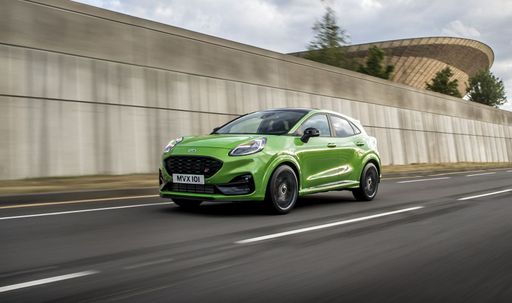 @ Ford Motor Company / Ford Media Center
@ Ford Motor Company / Ford Media Center
Ford Puma
Dacia Spring
The Dacia Spring stands out as an affordable and environmentally friendly option in the electric vehicle market, combining practicality with a compact design ideal for urban settings. Its minimalist interior, while basic, provides all the essential features needed for a comfortable drive, reflecting its cost-effective approach. The vehicle's performance suits city driving, making it an appealing choice for those seeking an entry-level electric car.
details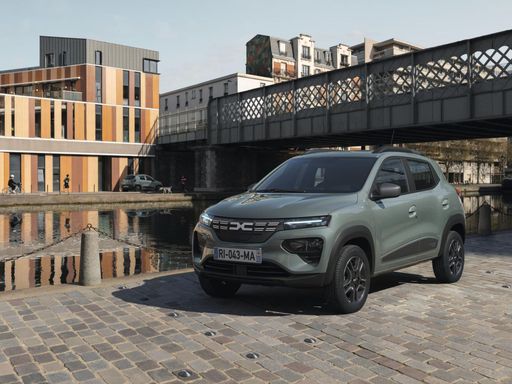 @ Dacia / Renault Group Media
@ Dacia / Renault Group Media
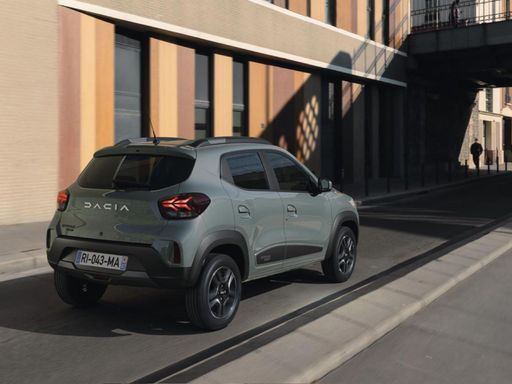 @ Dacia / Renault Group Media
@ Dacia / Renault Group Media
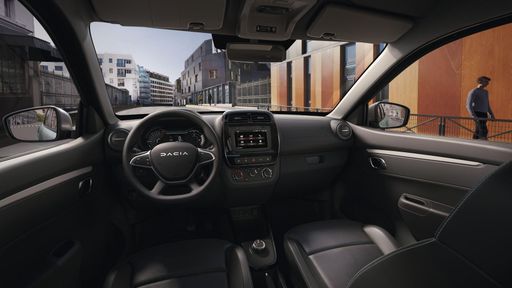 @ Dacia / Renault Group Media
@ Dacia / Renault Group Media
Ford Puma
The Ford Puma is a cheeky compact crossover that blends sporty styling with city-friendly practicality, giving drivers a surprisingly fun and composed ride. With clever storage tricks and a lively personality, it’s a smart pick for buyers who want enjoyment without fuss.
details @ Ford Motor Company / Ford Media Center
@ Ford Motor Company / Ford Media Center
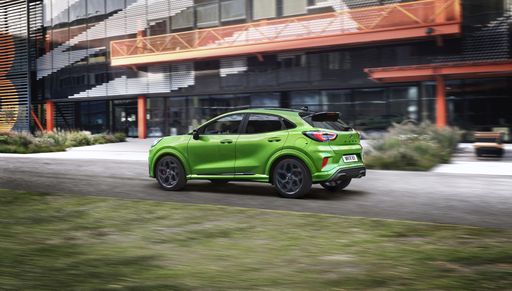 @ Ford Motor Company / Ford Media Center
@ Ford Motor Company / Ford Media Center
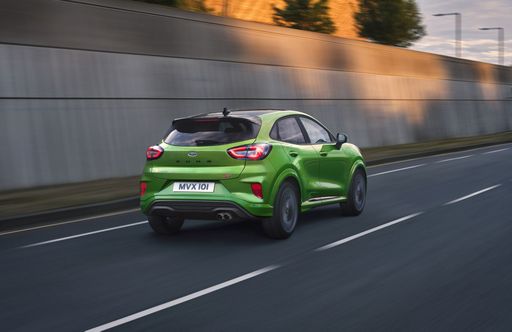 @ Ford Motor Company / Ford Media Center
@ Ford Motor Company / Ford Media Center
 @ Ford Motor Company / Ford Media Center
@ Ford Motor Company / Ford Media Center
 @ Dacia / Renault Group Media
@ Dacia / Renault Group Media
|
 @ Ford Motor Company / Ford Media Center
@ Ford Motor Company / Ford Media Center
|
|
|
|
Costs and Consumption |
|
|---|---|
|
Price
14500 - 17100 £
|
Price
24800 - 36300 £
|
|
Consumption L/100km
-
|
Consumption L/100km
5.4 - 5.9 L
|
|
Consumption kWh/100km
13.2 - 14.1 kWh
|
Consumption kWh/100km
13.1 - 13.9 kWh
|
|
Electric Range
225 - 228 km
|
Electric Range
361 - 376 km
|
|
Battery Capacity
26.80 kWh
|
Battery Capacity
43 kWh
|
|
co2
0 g/km
|
co2
0 - 135 g/km
|
|
Fuel tank capacity
-
|
Fuel tank capacity
42 L
|
Dimensions and Body |
|
|---|---|
|
Body Type
SUV
|
Body Type
SUV
|
|
Seats
4
|
Seats
5
|
|
Doors
5
|
Doors
5
|
|
Curb weight
1013 - 1050 kg
|
Curb weight
1316 - 1563 kg
|
|
Trunk capacity
308 L
|
Trunk capacity
456 - 523 L
|
|
Length
3701 mm
|
Length
4186 - 4226 mm
|
|
Width
1583 mm
|
Width
1805 mm
|
|
Height
1519 mm
|
Height
1550 - 1555 mm
|
|
Max trunk capacity
1004 L
|
Max trunk capacity
1216 - 1283 L
|
|
Payload
265 - 302 kg
|
Payload
367 - 469 kg
|
Engine and Performance |
|
|---|---|
|
Engine Type
Electric
|
Engine Type
Electric, Petrol MHEV
|
|
Transmission
Automatic
|
Transmission
Automatic, Manuel
|
|
Transmission Detail
Reduction Gearbox
|
Transmission Detail
Reduction Gearbox, Manual Gearbox, Dual-Clutch Automatic
|
|
Drive Type
Front-Wheel Drive
|
Drive Type
Front-Wheel Drive
|
|
Power HP
44 - 65 HP
|
Power HP
125 - 168 HP
|
|
Acceleration 0-100km/h
13.7 - 19.1 s
|
Acceleration 0-100km/h
7.4 - 9.8 s
|
|
Max Speed
125 km/h
|
Max Speed
160 - 210 km/h
|
|
Torque
113 - 125 Nm
|
Torque
170 - 290 Nm
|
|
Number of Cylinders
-
|
Number of Cylinders
3
|
|
Power kW
33 - 48 kW
|
Power kW
92 - 124 kW
|
|
Engine capacity
-
|
Engine capacity
999 cm3
|
General |
|
|---|---|
|
Model Year
2024
|
Model Year
2025
|
|
CO2 Efficiency Class
A
|
CO2 Efficiency Class
A, D
|
|
Brand
Dacia
|
Brand
Ford
|
What drive types are available for the Dacia Spring?
The Dacia Spring is available as Front-Wheel Drive.
The prices and data displayed are estimates based on German list prices and may vary by country. This information is not legally binding.
